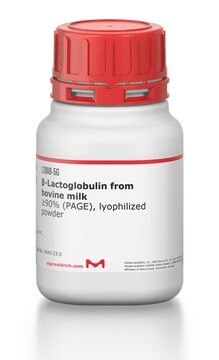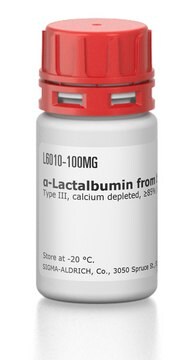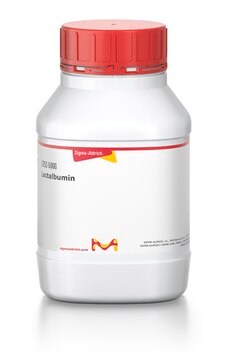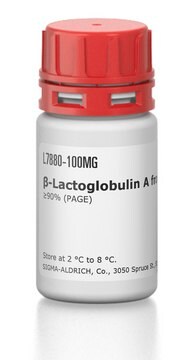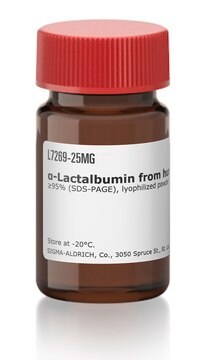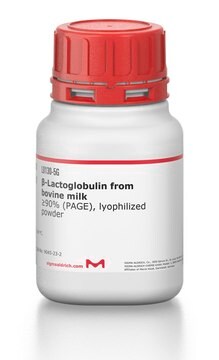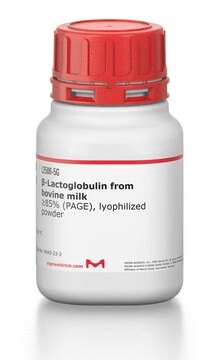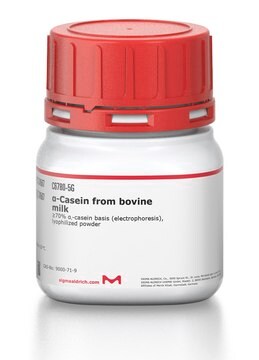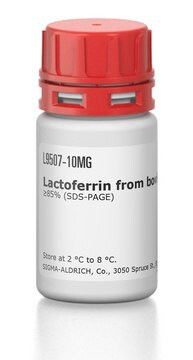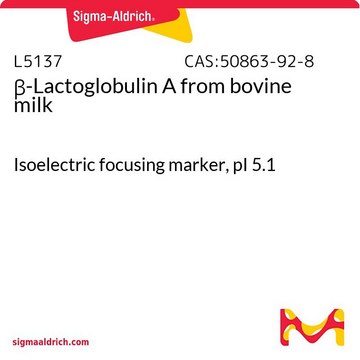L5385
α-Lactalbumin from bovine milk
Type I, ≥85% (PAGE), lyophilized powder
Synonym(s):
Bos d 4, Lactose synthase B protein, alpha-lactalbumin
About This Item
Recommended Products
biological source
bovine milk
type
Type I
assay
≥85% (PAGE)
form
lyophilized powder
concentration
≥85 % protein
technique(s)
cell culture | mammalian: suitable
electrophoresis: suitable
impurities
calcium, tested
solubility
H2O: soluble 10 mg/mL, clear to slightly hazy, colorless to faintly yellow
UniProt accession no.
storage temp.
−20°C
Gene Information
cow ... LALBA(281894)
Looking for similar products? Visit Product Comparison Guide
General description
Application
Biochem/physiol Actions
Quality
Storage Class
11 - Combustible Solids
wgk_germany
WGK 3
flash_point_f
Not applicable
flash_point_c
Not applicable
ppe
Eyeshields, Gloves, type N95 (US)
Choose from one of the most recent versions:
Already Own This Product?
Find documentation for the products that you have recently purchased in the Document Library.
Customers Also Viewed
Our team of scientists has experience in all areas of research including Life Science, Material Science, Chemical Synthesis, Chromatography, Analytical and many others.
Contact Technical Service